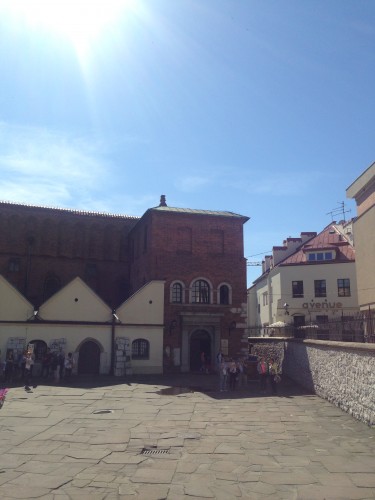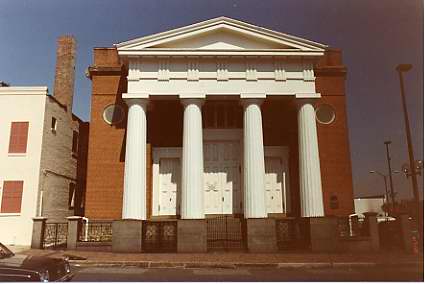Sacred Space, Past and Present

Post by Collections Intern Joelle Paull. To read more posts from JMM interns, past and present, click here.

Studying medieval art, I have become really interested in how ritual space shapes a community and in turn is shaped by a communities need. While studying and traveling in Europe, I found myself exploring medieval synagogues and Jewish ghettos. Until that point my studies had been focused on Christian ritual spaces that became the center of towns across Europe. I was excited and pleasantly surprised to find myself in Jewish ritual spaces, often the center of centuries old Jewish neighborhoods. In some cases, like in the Jewish ghetto in Venice, the only distinguishing features of the synagogues are the rows of windows in the upper gallery.
These were unusual when compared to the narrow, cramped homes surrounding them. The same is true of the Old Synagogue in Krakow, one of the many centuries old synagogues on the perimeter of the city center, which was built in the 15th century, underwent many changes and was ultimately renovated and restored in the 20th century after WWII. Today, it is located in the corner of a square and is a simple multi-level brick building, with three large windows over the large entrance. From the outside there is little indication of the function of the building or the large rib vaulted interior.

Walking into the Lloyd Street Synagogue my first day of work, I couldn’t help but draw parallels between the synagogue and the spaces I had studied. The Lloyd Street Synagogue is a perfect example of a ritual space that evolved over centuries to reflect the community around it. The synagogue was the center of the Jewish community in Baltimore and as such took on both a religious and civic importance. The archaeological discoveries at the current synagogue, showcased in the exhibit, The Synagogue Speaks, allow us to understand what the synagogue looked like from 1845 to today.
From this understanding we can begin to understand how it functioned on a day to day basis and the role it had in the lives of its patrons. The unassuming facade of the sacred building gives little to no indication that it is a synagogue. It was only in the 1900s, after the building was converted the building back into a synagogue that the exterior begins to show signs of its function – Hebrew lettering on the portico, the gallery level windows on the façade. The 20th century synagogue, until it was beginning in the 1960s, was elaborately decorated, with new furniture, chandeliers, and murals. The following restoration returned the synagogue to its original 1860s appearance. The ability to walk into a space and see the many layers of its history makes the Lloyd Street Synagogue unique. The oral and written histories and the many artifacts only add to our understanding of the space itself.
